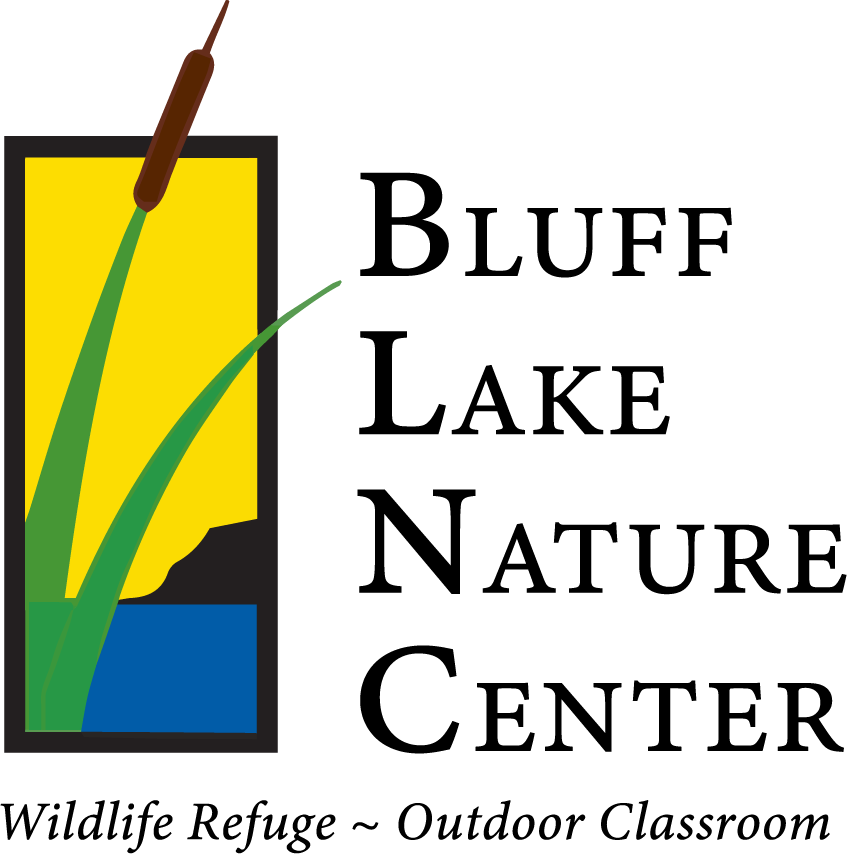Erickson’s July 2022 Site Update
Summer is in full swing at Bluff Lake! The trees are fully leafed out, the wildflowers are blooming, and kids of the animal and human variety are running all over the nature center! Summer camp has been going for a little over a month now, and we’ve been noticing lots of young animals on the landscape too: the great horned owls successfully fledged three nestlings, we presume the red-tailed hawk nesting has fledged, the coots and geese on the lake are showing their young the ropes, Woodhouse’s toads are abundant on the edges of the outfalls and near the lake after emerging from their tadpole lives, and a mama raccoon has been leading three little kits all over the site as they get their bearings. Truly a special time to be out observing the natural world!
You may notice some new features around the property these days: Claire Fontenot, a local Eagle Scout, successfully completed her final project recently, which involved installing an orienteering course at Bluff Lake and creating a map to help orienteering scouts and visitors find the posts that spell out a hidden message! The map and worksheet can be found at the main kiosk at our entrance, in one of the pamphlet boxes, or HERE. Great job, Claire!
We have also installed new signage to help visitors understand the importance of staying on trail, and the impacts humans have on the landscape and its inhabitants when we travel off-trail. These signs cover a range of topics from habitat fragmentation, to erosion, to vegetation loss. There are also new signs placed at social trails (trails that form when visitors travel off-trail frequently enough to destroy a corridor of vegetation) and other high-use areas to dissuade people from entering protected habitat. These signs are bilingual, and also include a QR code which directs visitors to our Outdoor Ethics page. Thanks to the education team for collaborating on these, and to our incredibly talented volunteer Christopher Imhof, who painted these wonderful pieces for us.
This summer has been all about data, data, data! We are conducting many of the first natural resource inventories at Bluff Lake, and it’s been exciting to begin to understand Bluff Lake’s ecology better as we learn through the data we collect. In collaboration with Patrick Aubin, a local chemistry teacher and masters candidate, we are collecting water quality data at Bluff Lake’s deepest point (about 16 feet) twice a month! We will also be collecting data on the levels of phosphorus in the lake, which can influence a number of things like algal blooms. We are excited to begin to get a picture of how the lake changes over the course of the year!
We are also using motion-activated cameras and sound detectors to study the animals we don’t see as often at Bluff Lake. The cameras have captured a wide range of animals going about their lives, and we’ve had some really interesting observations, like a mink entering a prairie dog burrow, and a coyote hunting what appears to be a muskrat under the boardwalk! The sound detectors gather both acoustic (sounds we can hear) data and ultrasonic (sounds that are higher than we can hear) data to get an idea of the bat and amphibian species that call Bluff Lake home. Before this summer, we thought only two species of bats lived here - now that we’re collecting data, it’s looking more like there are 5 or 6 species residing here!
Our land management intern, Anali Blue, has been developing invertebrate surveys that use a variety of different methods, from pitfall traps, to hanging traps, to sweep nets, to dip nets in the lake for aquatic invertebrates. We’ve documented several insect species that previously hadn’t been observed at BLNC!
We are also conducting weekly fish surveys of the lake, and snake surveys in other parts of the property. So far we’ve found three snake species through incidental observations, and have caught over a hundred fish of 2 different species: the brook stickleback and the fathead minnow, both native minnow species. We’ve also caught crayfish and a tiger salamander!
Lastly, we’ve been working with Mile High Youth Corps (an Americorps program) to map all the trees at Bluff Lake and record their species, size, and relative condition, using the open source urban forestry application, COTreeView. This data will be invaluable to understand the biodiversity of Bluff Lake, plan for and mitigate wildfires, and plan for future tree planting and management.
I want to say a special thank you to our trusty volunteers that come out every Friday for Weed Warriors! Our site stays beautiful and full of native plant species because of the work of our volunteers, and I really appreciate all the effort and great attitudes, despite the summer heat. If you’d like to come join us to remove invasive weeds and protect Bluff Lake’s native plant communities, feel free to reach out to me at erickson@blufflake.org.
Thanks, everyone, and have a great rest of your summer!



